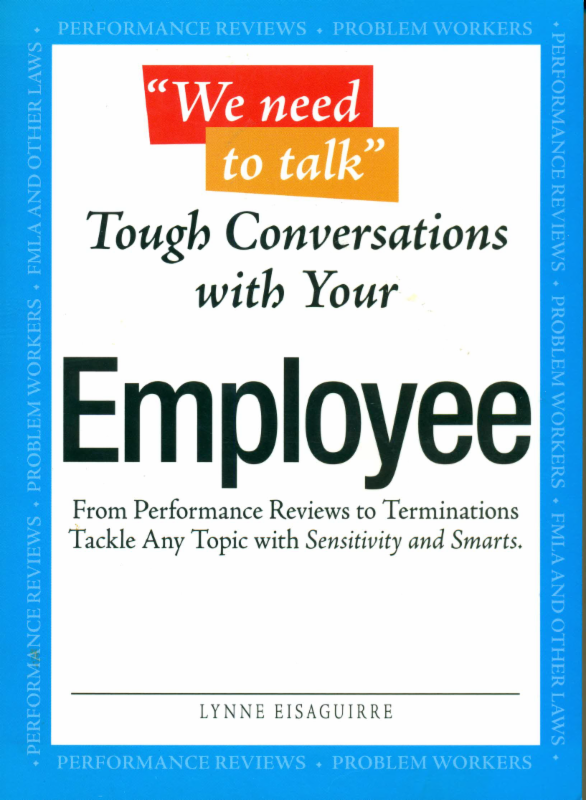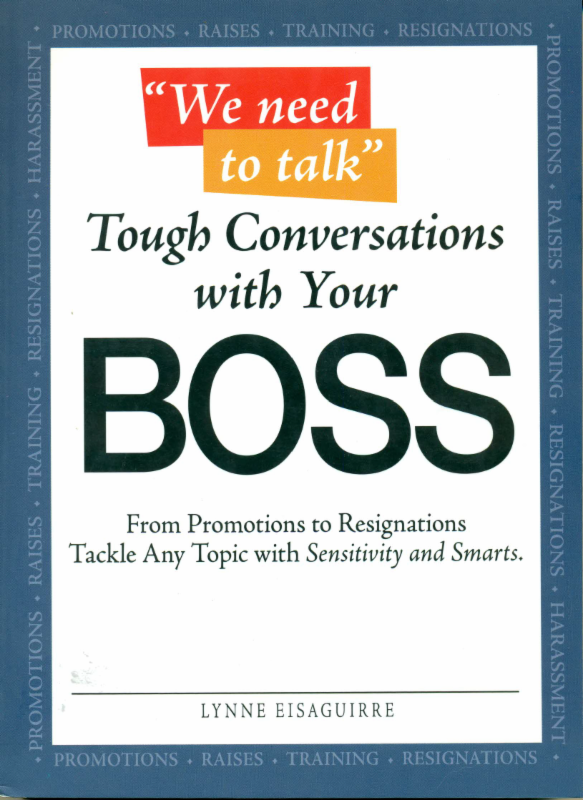|
Do You Know the Number One Tool to Deal With a Problem Employee?
 Problem employees are the bane of any leader’s existence. They could be a problem because they’re incompetent, lazy, annoying or explosive. No matter, they still drive you crazy and you’re stuck trying to cope. Perhaps you’ve let things go because they’re brilliant, a rain-maker or your boss’s nephew. Perhaps you let things go because other employees had yet to complain and suddenly, they’re all stepping up to express their concerns. Perhaps you just had your head in the sand, hoping that someone else would fix the issue.
What’s the number one mistake leaders
at every level make in addressing
problem employees? Delay.
When leaders delay, hoping for a miracle intervention from someone else, the situation doesn’t improve, it compounds. By delaying, you are damaging your standing with other employees who assume that you are unaware of the issue or afraid to address the person. Delay also damages morale of the employees who have to deal with the person without your support. Delay hurts your bottom line because you are not getting the productivity you need out of the problem employee.
What Should You Do?
- Don’t wait. While you should, of course, allow new employees time to learn the ropes, have a specific probationary period, consistent for all new employees. If someone is not hitting the mark after that period, deal with it, don’t wait for improbable rescue.
- Communicate. Set expectations early and create a dialogue about whether members of your staff are successful at meeting expectations. Make sure you have frequent check-ins about what is working and what is not working.
- Terminate. It’s a clichéd but true management mantra: it’s not the people you fire who cause you problems, it’s the people you don’t fire. I’m all in favor of giving people the time and the training they need to improve, performance improvement plans and the like, but once you’ve gone through those steps, move someone out of the organization in a compassionate way. Send them along with your best wishes and hopes that they are able to find a place that’s a better fit, but do it without dithering.
Have you (or other leaders in your organization) held on to a problem employee for too long? What were the consequences? What would you do differently next time? Let us know your thoughts.
 Did You Know Did You Know
All of our leadership and management classes cover the issue of courage in dealing with problem employees.
Call or write me to discuss your options at: 303-216-1020 or [email protected]
Learn more about our training offerings and check out our team members at:
Be sure to read Lynne’s book “Stop Pissing Me Off! What to do
When the People You Work With Drive You Crazy!”
|
 July 30, 2018
July 30, 2018

 to government action. Private employers can make rules about behavior, including rules about speech. We all give up something in exchange for a paycheck; the ability to say and do whatever we want at work is one of the things we relinquish. You can make and enforce rules limiting speech that is harassing, discriminating or otherwise creates an environment that inhibits your goals.
to government action. Private employers can make rules about behavior, including rules about speech. We all give up something in exchange for a paycheck; the ability to say and do whatever we want at work is one of the things we relinquish. You can make and enforce rules limiting speech that is harassing, discriminating or otherwise creates an environment that inhibits your goals.


 In today’s labor market, you can’t afford to lose your best people. Finding good people in today’s tight job market is hard enough. Once you have a great employee, how do you make sure that no one swoops in and snatches them away from you?
In today’s labor market, you can’t afford to lose your best people. Finding good people in today’s tight job market is hard enough. Once you have a great employee, how do you make sure that no one swoops in and snatches them away from you?


 We provide a variety of tools for 360 feedback reviews. Call or write us at: 303-216-1020 or
We provide a variety of tools for 360 feedback reviews. Call or write us at: 303-216-1020 or 
 Problem employees are the bane of any leader’s existence. They could be a problem because they’re incompetent, lazy, annoying or explosive. No matter, they still drive you crazy and you’re stuck trying to cope.
Problem employees are the bane of any leader’s existence. They could be a problem because they’re incompetent, lazy, annoying or explosive. No matter, they still drive you crazy and you’re stuck trying to cope.
 If you are a leader, you are probably spending your days lurching from crisis to crisis, trying to put out fires before they burn down the house. Your time is at a premium; spending time with your troops is always on your list, but frequently ends up last.
If you are a leader, you are probably spending your days lurching from crisis to crisis, trying to put out fires before they burn down the house. Your time is at a premium; spending time with your troops is always on your list, but frequently ends up last.